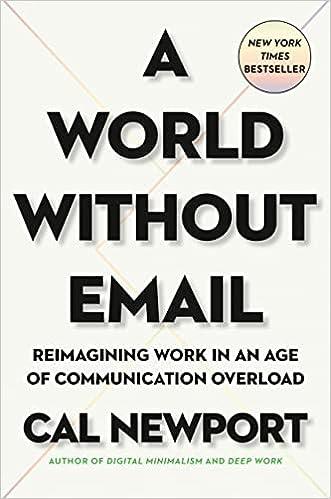
“In this second part, I introduce a framework I call attention capital theory that argues for creating workflows built around processes specifically designed to help us get the most out of our human brains while minimizing unnecessary miseries.”
Despite the catchy title, this publication is not about emails or doing without them – it is about any sort of instant messaging and – when used correctly – it recognises that instant messaging is an amazingly useful tool. The value of the publication is that it outlines the problems that are caused by unrestricted use of instant messaging and the damage created if ad hoc workflows are created using instant messaging without consideration to the impact on workers and overall efficiency.
Cal Newport introduces the concept of the "hyperactive hive mind" - a mode of constant communication and quick response. He highlights the drawbacks of this process such as increased stress, reduced productivity, and the loss of time for deep work. Newport proposes alternative solutions, including reducing the reliance on email for communication and implementing strategies like asynchronous communication and task boards allowing readers to implement their own solutions and regain control.
Understanding your own work environment and what to do about it.
This is a fascinating book. Although the author does not really say that we will have a world totally without emails any time soon, it provides invaluable guidelines on understanding your own work environment and what to do about it. The author has coined the phrase "Hyperactive Hive Mind Workflow" as the general mode of operation most of us work in. Constant distractions not only by emails, but also voice messages, teams messages, and various other social media distractions. Again, the book does not provide a solution for every scenario but provides very good guidelines on how to think and what to do to work less in the Hyperactive I've Mind Workflow modality.
